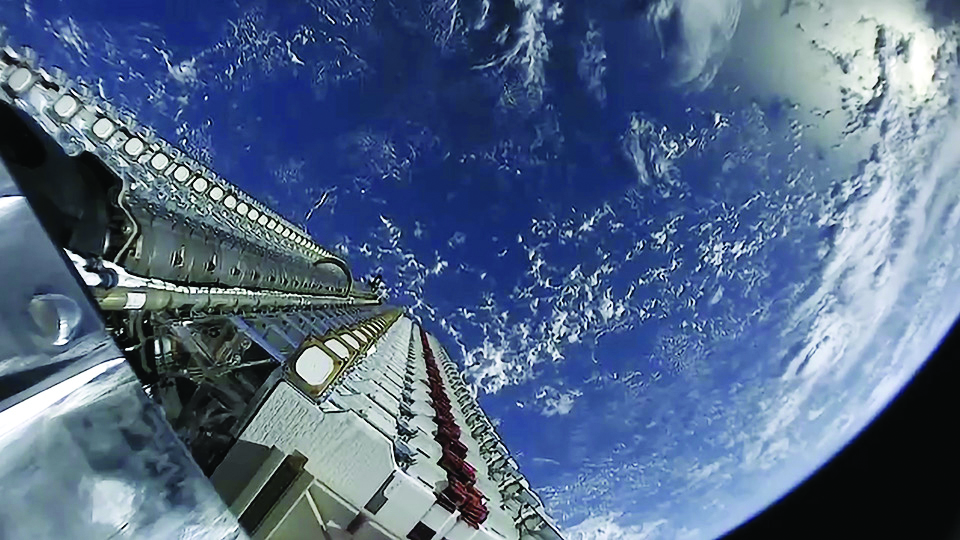Satellites are leading the charge in the battle against climate change, providing critical insights about Earth that can only be gained from space. But are they also contributing to the problem?
Putting aside environmental impacts of the rockets that launch them to orbit, satellites inject a complex mix of chemicals into the atmosphere when their computers, fuel tanks and other onboard materials vaporize upon reentry.
This wasn’t much of a talking point decades ago when the U.S. Federal Communications Commission (FCC) determined, categorically, that nothing it regulates in space could have an environmental impact on Earth.
Until recently, the number of satellites in space was so small, and their orbits usually so high, that there were very few re-entries.
However, the rise of Starlink and other megaconstellations with thousands of satellites in low Earth orbit (LEO) are changing this.
Around 9,000 artificial satellites have been launched into space since Sputnik-1 became the first in 1957. In 2020 alone, SpaceX launched more than 800 satellites for a Starlink LEO broadband network that will provide continuous global coverage.
The ultimate destiny of LEO satellites is to burn up in the atmosphere after running out of fuel, pointing to an unprecedented number of reentries in the years to come as Starlink and other LEO constellations must continually replenish their networks.
Satellite operator Viasat, which provides broadband services that will compete with Starlink, is calling on the FCC to assess the network’s environmental impact before granting SpaceX permission to expand the constellation.
SpaceX has regulatory approval for up to 1,548 satellites in orbits at altitudes around 550 kilometers.
It has a license to operate an additional 2,825 satellites at 1,100-1,300 kilometers, but is requesting permission to bring those down to 550 kilometers.
SpaceX, which was estimated to have 1,378 satellites in orbit at the time of writing and has plans for a 42,000-strong constellation, was unable to comment.
The Healthy Heavens Trust Initiative and others in a coalition of public interest groups voiced their concern about satellite pollution, and other potential harms, in a March 10 petition to the FCC for emergency and expedited rule-making.
The coalition is so concerned about megaconstellations that it asks the FCC to pause approvals for broadband satellite deployments for 180 days, so the regulator can assess the risks.
Megaconstellation critics warn most of the damage to the atmosphere occurs at the upper layers, and only a fraction of pollutants make it there from the bottom up. Therefore vaporizing satellites could potentially introduce many compounds that wouldn’t usually reach such heights.
We can’t yet say for sure what that means for life on Earth.
The Aerospace Corp., a U.S.-based nonprofit, is in the early stages of researching the potential environmental impacts of reentry dust from satellites and rockets.
“As far as we know right now, the impact of space debris on the atmosphere is small, and certainly much smaller than aviation, and vastly smaller than terrestrial sources of pollution, or natural phenomena such as volcanoes,” says Ted Muelhaupt, principal director of Aerospace’s Center for Orbital Reentry and Debris Studies.
“However, the pace of launches and the rate of reentries will change in the next decade. In this case, reentry emissions could present larger global impacts than launch emissions.”
This article originally appeared in the April 19, 2021 issue of SpaceNews magazine.
